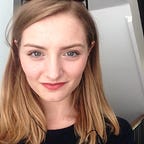Collage in Visual Poetry
For those of you who weren’t around for the first semester of my Workshop (Thesis course), I am researching visual poetry with the aim of exploring new potentialities for visual rhetoric. Over the course of the final semester of my degree, I am hoping to explore how a number of tools, including collage, kinetic typography, and interactivity, can be used to develop visual rhetoric in visual poetry.
Thus far, my experimentations have taken the form of a small, self-authored visual poetry anthology on the topic of my own mental health, as well as a motion version of that anthology. I also experimented with “environment” as a tool for creating visual rhetoric by projecting type into spaces in and around my home and then photographing the results.
To kick off this semester’s series of experimentations, I decided to use collage and letraset to create visual poems. I attempted to use layering and simple combinations of images to create a sense of depth and narrative within the composition. I also experimented with more abstract and literal forms. In the top left image, I used one image of a horizon as a more abstract rhetorical device, drawing on the sparseness and ominous feeling that the image presents. However, in the collage below, I used an image of a mountain as more obvious visual rhetorical device to emphasize the meaning of the poem: that it is okay to take up space, require attention and be noticed.
The process of making these collages was relaxing and intuitive. After primarily working on the computer, it was refreshing to get my hands dirty. I also love the visual quality of letraset: its small imperfections and inevitable uneven spacing add a human quality that implicates the tone of the poem.
I made a conscious decision to allow the creative process here to be low pressure and intuitive, in the interest of exploring the form and getting back into making after a few weeks off. I think that the results of these experiments are successful, and suggest the potentiality of using collage in other media to add more dimensions to poetry. Perhaps using collage elements on the web or in a motion piece would allow for narratives to be sequenced in more complex and challenging ways than they are in static collages.
While visually interesting, these compositions do little to challenge the viewer to interpret the poems in their own way. In future, I would like
to think a bit more critically about how verbal and visual rhetoric may overlap with one another, so that hopefully I can avoid redundancies.
With that said, I think this was a great warm-up exercise for the semester (and was simply enjoyable to make): two things which make this exercise worthwhile in its own right.
